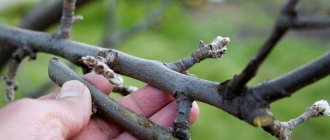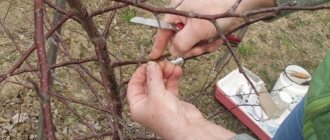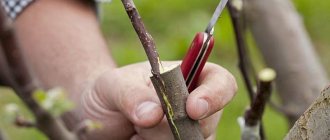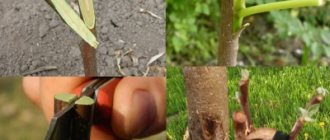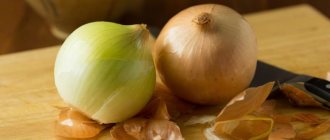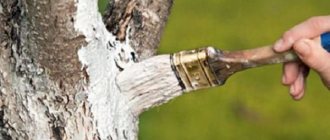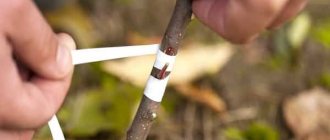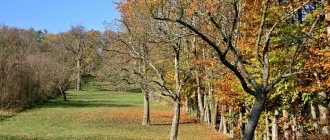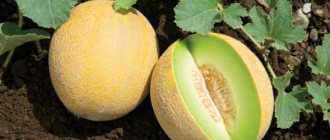A fruit tree is like a person: it needs help from time to time. Sometimes you even have to perform operations on him, which requires both knowledge and experience. That's why we open the issue with this useful article. We are preparing for the operation.
I have been dacha for 45 years. I just grew up in the garden! Back in 1950, my parents planted a garden on 15 acres. They planted 30 wildflowers, then cut down two-year-old trees and grafted several varieties onto each stump—more than a hundred came out. Parents were even invited to the Moscow Agricultural Exhibition, where they received awards - a small silver medal and others. When I started gardening, I read a lot of books. And I thought that the magazines sold in kiosks would be of little use to me. But one day I saw your magazine at my neighbor’s. I'm interested. And she appreciated it! I admire summer residents: craftsmen, hard workers, creative people who love the land. And with skillful editing, it’s generally wonderful. Interestingly, there is correspondence communication going on. A lot has been written about the problems of trees damaged by rodents in winter. I want to talk about bridge grafting .
Yes, no one is safe from trouble, or only those who never forget to tie spruce branches around the trunks. And by grafting with a bridge, a tree can really be saved. This method can be used if hares and mice have gnawed the bark along the ring, i.e. normal sap flow is generally impossible. This work is very precise and painstaking. You need to prepare cuttings (borrow from gardeners or buy in seed stores). Store at 0°C. Also, prepare a plaster. To do this, you need to take fabric - strips of different widths, but old fabric (for example, cotton sheets) - it must be torn by hand. Take garden varnish (it should melt in your hands; if it doesn’t melt, it’s no good), heat it up and saturate the fabric with it.
When inserting cuttings, it is very important not to confuse the beginning and end of each (top and bottom), only then will the cutting be able to properly perform the function of transporting water and nutrients. Accordingly, the bottom of the cutting should be inserted into the cuts in the lower belt of the bark, and the top into the upper.
Also prepare an old, already used bandage and washcloth (you will need to soak and wring out). Don't forget a sharp tool (garden knife). It’s good if the varnish contains pine resin (rosin), this will protect against rot. The number of cuttings should be even, depending on the diameter of the trunk: for a thin one - 2-4, for a thick one - 8 or more. Well, if the tree is not damaged too low, then there will be enough healthy bark below.
In what cases is it recommended to graft an apple tree with a bridge?
Bridge grafting is not a standard procedure. It does not change the varietal characteristics of the tree. In essence, this is a rescue measure that involves attaching a scion bandage to the trunk. The cuttings form a bridge between two sections of bark. The scion acts as a channel that distils sap from the root system of the entire above-ground part of the tree. Damage to the bark can be different: eating by hares, sun or chemical burn, freezing. It is important to consider the degree. If the bark is partially damaged, the fruit tree can survive. The crown will be able to receive nutrients from the root. With ring damage, the trunk is completely exposed. If you do not vaccinate in a timely manner, the crown will dry out.
The rescue procedure has 4 types. The following is used as a scion:
- cuttings;
- shoots from the trunk located below the damaged ring;
- young growth from the root;
- pieces of young bark;
- root sections.
You can do without vaccination if the bark is partially damaged. The wound is disinfected with Bordeaux mixture, lubricated with garden varnish, and wrapped with film or cloth. Over time, the apple tree will recover on its own.
Advice! If hares have heavily gnawed the bark along with the wood, starting from the ground to a height of more than 50 cm, then the chances of saving such a tree are minimal.
Pros and cons of bridge grafting
The bridge is most often used to save apple and pear trees. If you try hard, the graft will take root on other fruit trees, for example, plums. The bridge has an undeniable advantage. Grafting is the only way to save an apple tree with ring damage to the bark.
Against the backdrop of the significant advantages of the bridge, the disadvantages fade into the background, but they exist in much greater quantities:
- difficulty in performing vaccinations;
- impossibility of installing a bridge on a barrel less than 35 mm thick.
When ring damage is detected, the first step is to carefully inspect the barrel. If the cambium is preserved, the wound is wrapped with strips of cloth soaked in garden varnish. Over the summer, the tree will restore its bark on its own.
Indications for vaccination
The reasons for vaccinations may vary:
- Perform an operation on one tree so that different varieties of apples grow on it, thereby saving space in the garden.
- Increase the frost resistance of the fruit tree.
- Do not let a damaged apple tree die.
- Growing low trees using rootstocks with weak growth.
In the article we will focus on preserving damaged apple trees and the rules for grafting them with a bridge.
Preparation for vaccination
If damage to the bark is detected, you cannot delay with preparatory measures for vaccination. Before the onset of warm weather, the gardener must have tools, consumables and grafting ready.
Tools and materials
List of everything needed for vaccination:
- grafting garden knife;
- pruner;
- garden saw;
- winding material for bandages;
- putty in the form of garden varnish or other similar paste.
When grafting with a bridge, it is allowed to attach the scion to the trunk with small nails. If this method is chosen, a hammer must be included in the list of tools.
At the time of grafting, the pruning shears, saw, and knife must be sharpened. The instrument is disinfected by wiping with alcohol or copper sulfate.
An important procedure for grafting is the correct fixation of cuttings. The scion is tied with twine, strips cut from film or special garden tapes. It is permissible to use insulating tape used by electricians when insulating wires. Scotch tape is not suitable for wrapping the vaccine. The best winding material is considered to be a cotton strip of fabric impregnated with garden varnish. It is used for the primary internal strapping, and layers of bandages are wound on top.
Important! Experienced gardeners do not recognize fastening the scion with nails. Additional injury is caused to the tree. In addition, nails split thin cuttings. However, a method of fastening exists and is subject to consideration
.
How to prepare a scion
The preparation of material for grafting is usually done in the fall after the leaves have fallen. However, the bridge is a forced and unforeseen measure. A gardener cannot know whether hares will gnaw the bark on an apple tree in winter. For grafting, the scion is cut immediately before the start of the procedure - in the spring.
If cuttings are taken in the fall to propagate your favorite apple tree variety, then they can also be used for a bridge. The graft is stored in the cellar in winter, without allowing it to germinate. The branches are cut into pieces and placed in a box with moistened filler. Sand or sawdust is usually used.
Bridge scion is different from regular cuttings. The length of the branches should be 13 cm greater than the height of the ring damage to the apple tree bark. The thickness of the cuttings is selected according to the diameter of the trunk. Additionally, the area of damage is taken into account. If the height of the ring is up to 5 cm, a bridge is installed from twigs with a diameter of 4 mm. On an adult apple tree with large ring damage, grafting is done using cuttings of larger diameter.
The amount of scion for the bridge depends on the thickness of the trunk. A mature tree requires a minimum of 8 cuttings. For a young apple tree with a trunk thickness of 3 cm, a bridge is made of 2 branches. Another aspect of scion preparation depends on the specifics of the grafting. The cuttings used for the bridge should not leaf out. All buds are removed from the branch and new ones are not allowed to form.
Important! The scion can be used from a non-damaged apple tree. Cuttings will be suitable from another variety, game or even pear.
Preparation of the rootstock
The rootstock, which is the damaged trunk of the apple tree, is also prepared for grafting. Initially, the wound on the wood is treated with garden varnish. In this state the tree overwinters. In spring, garden varnish is washed off with a damp cloth. Using a sharply sharpened knife, cut the bark evenly along the ring from above and below the damaged area. The cut is made even but shallow to prevent cutting into the wood.
Deadlines
Every activity in the garden has its own time and rules. The process is year-round (for some it is more convenient to count - either from autumn to autumn, and for others from spring to spring).
You can get comprehensive information about the timing of apple tree grafting from this article.
Spring
The most favorable time for graft survival is spring:
- The process of sap flow that has begun contributes to good survival ;
- There is enough time to strengthen the cutting (bud) , and if failure occurs, there is the possibility of repetition in the summer.
We begin grafting the apple tree as soon as the temperature is within +7-+9 and before flowering .
- In March-April - cuttings ;
- In April-early May - bud .
Choose dry, but not hot weather . It is safer to start with early varieties. Suitable conditions for this vary in different regions.
Read more about grafting apple trees in spring here.
We don’t talk much about summer vaccinations – you don’t have time to raise your head. But in vain:
- Cuttings do not need to be selected in the fall and stored in the winter;
- It is easier to determine the condition of the rootstock;
- Active sap flow promotes good fusion;
- A large influx does not form at the grafting site (into the cleft).
Important! Summers are hot and often dry, so be sure to water the rootstock thoroughly.
In fruit trees, in the second half of July . During this period, you can start budding with your sleeping eye.
Budding with a sleeping eye.
You can read more information about summer grafting of apple trees in this section.
How to properly graft an apple tree with a bridge
Grafting begins with saving the rootstock. If damage to the bark is detected, the wound on the trunk is covered with garden varnish. The treatment will save the tree from drying out. The apple tree will stand until sap flows in the spring.
Procedure
Grafting begins with the selection of the required number of cuttings. Branches are selected that are suitable in length. If the scion was prepared in the fall and stored in the cold, before grafting it is warmed up inside a warm room.
Attention! Branches for grafting using the bridge method must have good flexibility.
All buds are removed from the scion. At the ends, corner cuts about 3 cm long are made with a knife. At the time of grafting, the rootstock must be prepared. 1 cm is retreated from the evenly cut edge along the bark ring. Using a knife, cut pockets for cuttings in the shape of the letter “T”.
Important! Before grafting, the cuttings must be correctly laid out in the direction of growth of the branches. If the scion is inserted upside down, the bridge will not take root on the apple tree.
How to properly attach a scion to a rootstock
The cuts on the bark in the shape of the letter “T” should be exactly opposite each other. This is an important condition for the formation of a bridge. Use the tip of a knife to turn away the bark on opposite cuts. The cutting is inserted into the pockets, pressing the oblique cut against the wood. After insertion, the scion should arch slightly. In this state, it is fixed to the trunk with twine or strips of fabric soaked in garden varnish. Another strip is wound on top. When the bridge is assembled from all the cuttings, the graft is tied with a washcloth. All remaining bare areas of the trunk are covered with garden pitch.
Important! If nails are chosen for fixation, then the cuttings in the area of the T-shaped cuts are nailed to the wood. No fixing tape is needed. The graft is only wrapped in cloth, sponge, and smeared with garden varnish.
Dates
When figuring out how to properly graft an apple tree with a bridge, you first need to study the recommended timing. The procedure is effective only at the moment of active sap flow. The sap begins to flow in the spring.
Specific dates vary depending on the region of growth. You should focus on melting snow and warming up the air. Typically, sap flow begins when the average daily temperature reaches 6-7 degrees.
The first sign of active sap flow is slight peeling of the bark from the wood. Early procedure is ineffective.
If urgently necessary, restoration can be carried out even in August. If the injury occurred in the summer, then you should not hesitate.
Follow-up care for grafted apple trees
The main requirement for caring for the graft is to remove the buds that form from the bridge branches. They shouldn't germinate in the summer. The crown of the apple tree is cut by 1/3. This forced measure will save moisture consumption by the green mass while the grafting bridge takes root. A young apple tree with a thin trunk must be tied to a stable support. If the tree bends from the wind, the bridge will be broken, the cuttings will come out of the pockets, and the graft will not take root.
For intensive sap flow, the apple tree requires frequent watering. Phosphorus and potassium are added as fertilizers. In September, the soil under the apple tree is dug up to a depth of 50 cm. The digging area is equal to the diameter of the crown. In autumn, apple trees up to 12 years old are fed with 130 g of superphosphate and 40 g of potassium chloride. For an old tree with a bridge graft, the dose of fertilizer is increased by 20 g.
The graft is observed until it grows together. All this time, the bridge should be generously lubricated with garden pitch. To avoid drying by the sun, the graft on the apple tree is additionally wrapped with birch bark or pieces of film.
What is intercalary rootstock?
One of the relatively new ways to graft an apple tree involves the use of an intercalary or intercalary rootstock. Most often, this method is used in situations where there is a desire to grow a seedling that would combine the positive characteristics of a crop on vegetative or seed rootstocks. Grafting with an intercalary rootstock is done as follows. At the beginning of spring, a small cutting taken from a tree belonging to the group of clonal rootstocks is grafted onto an annual seedling of a vigorous variety using the “split” or “improved copulation” method. The grafted plant is left to overwinter, and at the beginning of next spring the shoot, which has managed to grow from the previously grafted cuttings, is cut off at a height of 25 to 30 cm. It is already grafted with material of the desired productive variety.
The main disadvantage of intercalary rootstock is its high labor intensity, so this technique is practically not used in the field of industrial fruit growing. The described method of plant grafting is most often used by amateur gardeners when conducting experiments in their summer cottages.

